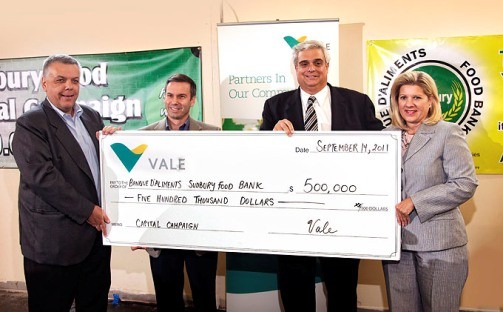The Sudbury Star is the City of Greater Sudbury’s daily newspaper. cmulligan@thesudburystar.com
Vale presented a giant cheque for a huge sum of money Wednesday to the Sudbury Food Bank for its capital campaign.
Tito Martins, chief executive officer of Vale Canada Ltd., announced a donation of $500,000 to the food bank at its new warehouse headquarters on Webbwood Drive.
Martins followed in the footsteps of two former employees of Vale in supporting the organization. Murilo Ferreira, the former president and CEO of CVRD Inco, made a five-year commitment toward the food bank’s operating costs when the Brazil-based company first purchased Inco.
Longtime employee and United Steelworker member Edgar Burton, who died last year, started a food drive more than 22 years ago that became so successful that 80 tons of food was collected last Christmas in Burton’s honour.

























